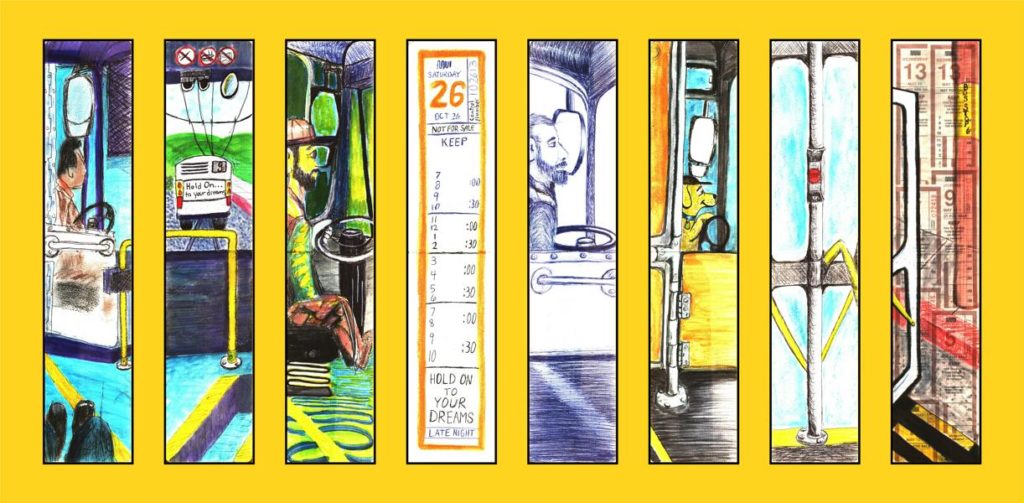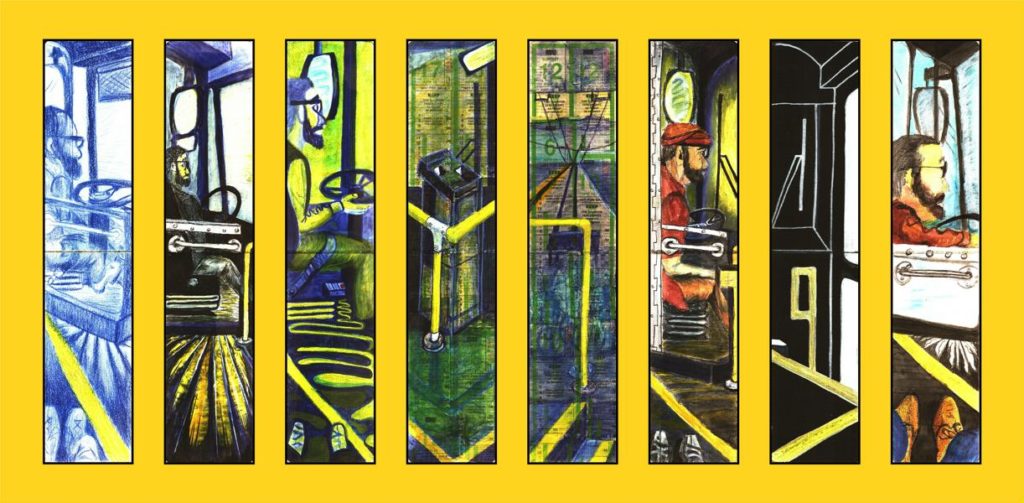The author originally told this story before an audience in San Francisco as part of an evening of performance and storytelling sponsored by Tipping Point Community on November 18, 2021 at Manny’s, 3092 16th St. San Francisco. This story has been adapted and edited for your reading pleasure, and hopefully, inspiration.
I think of the places I’ve slept in in my life – buses, trains, staircases, in between neighborhoods, and the beach. The beach isn’t so wonderful when you wake up sunburned and dehydrated, and you don’t have a home to go to.
It’s 3 in the morning. It’s cold, windy and lonely. I’ve been wandering the streets for days. I felt like a rat in a maze: always moving, but going nowhere. I went to a bus stop in the Excelsior District.
Moments later, a bus pulls up – a 52 night owl. The doors open. The driver says, “Come on aboard.” I explained to her that I have no money for the fare. She said, “Come on aboard anyway. I’ve gotta drive, and you can keep me company.”
It was the first positive communication I’ve had in weeks. I looked her in the eye, said “thank you,” and boarded the bus.
Sometimes, when I was homeless, I felt like I was invisible or transparent to society. People would look right through me, or worse, I was in their way. I walked to the back of the bus and sat down.
I was so thankful to be inside rather than outside. It was warm, comfortable and safe. I looked around the bus, and there were other folks like me. I leaned my head against the window and fell asleep. I slept on other Muni vehicles – the N Judah, which goes from the Embarcadero to the beach. It’s about a 90-minute ride, so I was able to get 90 minutes of sleep in a safe place.
You might be wondering, “What happened, how did you become homeless?” I had a career. I was a baker and pastry chef for over 20 years. I’d take the 38 Geary to the Cliff House or the 38 downtown to Fog City Diner. I also worked at a wedding cake shop over on Potrero Hill called Cakework. I worked at Costco mass-production baking. I took the F Market to a bakery in the Castro called Sweet Inspirations.
I was a meth addict for over 20 years. In the early ‘90s I was diagnosed with HIV and given six months to live. I went on disability. I left San Francisco because I couldn’t afford it anymore, and moved back to my hometown of Fresno, California.
While I was there one day, someone knocked on my door, and I looked through the peephole. I could see them out of my right eye, but couldn’t see out of my left. I panicked and called my doctor, and they rushed me into surgery and tried to save my vision, but it was too late. The virus had severed the optic nerve.
It came on so slowly, quietly and painlessly. It wasn’t like I was in a car accident and, BOOM, I lost my vision. It was gone before I knew it happened.
I wear a patch to communicate to the world that I can’t see out of my left eye. If I happen to bump into you on the subway or on the train or bus, you would instantly understand that I didn’t see you. Lighthouse for the Blind was instrumental in helping me adjust to my new reality.
I moved back to San Francisco, homeless, because I would rather be in San Francisco than in Fresno. But don’t get me wrong: I had a wonderful childhood, and loving parents, friends and a big church family – which I still do.
But the first time I drove my little white ‘65 Volkswagen bug across the Bay Bridge and saw the San Francisco skyline and the Transamerica Pyramid, I breathed a sigh of relief. It was a place where I could express myself freely. I had a refuge from intolerance – a place that felt like home like no other place I ever had or ever could.
While on the streets, I was able to put down my addiction to meth. It was like chewing a piece of gum for over 20 years, and it became stale so I spit it out. That was over 10 years ago.
One year, I volunteered at a Gay Pride fest. From that experience, I met a really nice guy who invited me to stay with him. So I moved from the shelter I had been in. He had an apartment in Twin Peaks. From the balcony, I could see downtown to the shelter I had stayed in for months. It was located below the Coca-Cola sign that’s no longer there (so sad).
As a gay man, I would hang out at a bar called The Eagle, and they were known for their Sunday beer busts. One day a man in full leather walked in. We made eye contact, hit it off and dated. We got married in 2013.
Shortly after, I started taking drawing classes at the City College Fort Mason campus. I would take the 6 Parnassus to the 43 Masonic to get to the class. One of my assignments from my teacher Diane Oliver, who happens to be here tonight, was to create a series. So I created a series – 64 drawings, to be exact – in honor of all SF Muni operators, because Muni was there for me when I had nothing.
I would draw the yellow line that we must stand behind to keep us safe from harm and the driver with the huge side view mirrors, the fare box and everything around them.
Some day, I hope to find the bus driver that befriended me. I haven’t seen her since that one night when she was so kind and showed me humanity. I’ve been looking for her, but I haven’t been able to find her. When I find her, I’ll say, “Thank you so much, because you were the inspiration for my body of work.”
In closing, I’d like to share that every morning when I awake, I am grateful to have a bathroom to use, to pour myself a cup of coffee, and enjoy breakfast with my husband and our kittycat in our San Francisco home.







